Description Tombak (Tonbak)
The Tombak (or Tonbak), also known as Persian Tombak or Zarb drum , is a wooden goblet drum, which is the most frequently played percussion instrument in Persian folk music and the classical Persian music of Iran. Known for its distinctive sound and versatility, the Tombak can be played in a variety of musical styles ranging from classical to cotemporary. With its mesmerizing rhythms and unique sounds, the Tombak has become a popular instrument among musicians around the world.
History of Tombak
The origins of the iranian Tombak or Zarb drum can be traced back to ancient Iran, where it was used in religious or traditional ceremonies. Later it became an integral part of classical Persian music and the backbone of the rhythm section. It has evolved over time, with master musicians constantly developing new techniques and playing styles. In the early 20th century, tombak playing techniques were standardized by the renowned musician Hossein Tehrani. He developed a system of notation for the instrument.
Characteristics of Tonbak
One of the most distinctive features of the tombak or Zarb is its ability to produce a wide range of sounds and tones. The word “Zarb” means ” to strike” in Persian, which refers to the technique of using the fingers and finger tips to strike the drum head, producing a wide range of melodic rhythms. Players can use a variety of techniques to produce different sounds, including open and closed strokes, finger snaps and slaps. These techniques can be used to create intricate rhythms and melodies that are characteristics of Persian music.
Styles of Music
Traditional music
The iranian Tombak is used in a variety of musical styles, including classical Persian Music, folk music, and contemporary music. In classical Persian music, the tombak is often used as a solo instrument or as part of an ensemble that includes other traditional Persian instruments such as Satur, Tar, and Setar.
Folk music
In folk music, the tombak is often used to accompany dance and song. It is played in a variety of regional styles, each with its own unique rhythms and techniques. For example, the Khorasan style of tombak playing is characterized by fast, intricate rhythms, while the Bushehr style is known for its use of slow, melodic patterns.
Contemporary music
In contemporary music, the tombak has been used by a number of musicains to add a unique flavor to their compositions. Musician such as Mohammad Reza Shajarian have incorporated the tombak into their music, blending traditional Persian styles with modern influences. Whether played in traditional Persian styles or incorporated into contemporary music, the tombak continues to be a beloved instrument that showcases the rich cultural heritage of Iran.
Construction of Tombak
The Tombak is traditionally made of a single block of hardwood, typically maple or ash tree. However, Majid Drums has used other innovative construction methods such as putting together the pieces of wood in layers to make a Tonbak. The type of wood used can affect the sound of the instrument, as different woods have different densities and resonances, which can result in variations in tone and timbre. The top of the instrument is covered with animal skin, usually goat or sheep. The size of Tombak can vary, but majiddrums has its own standard. It is around 46-48 centimeters height and 26.5-32 centimeters in diameter. The throat of the percussion is the cylindrical shaped part called Nafir that connects the body to the hollow base. It allows for the sound waves produced by the Tomabk to escape and fully resonate, contributing to the overall tone and quality of the instrument’s sound.
Playing Techniques
Playing the Tombak requires a great deal of skill and practice. It is played with the hands and fingers, using a variety of different techniques and hand positions. The dominant hand is used to produce the main rhythm, while the other hand is used for additional embellishments and fills. There are two main beats to be played on the Tombak. Tom & Bak! Tom refers to the bass tone and is played in the middle of the playing surface while Bak produces a high-pitched tone and is played on the hoop. The Tombak can be placed on the lap, hung horizontally from the neck or shoulder, or under the arms.
Care & Maintenance of Tonbak
Maintaining the Tombak is essentail to ensure that it stays in optimal playing condition and lasts for many years to come. Here are some tips for maintaining your Tonbak:
- Protect it from extreme temperatures and humidity. To prevent damage, store your Tonbak in a cool, dry place, away from direct sunlight, and avoid leaving it in wet or damp areas.
- Store it in a proper case! It is recommended to use a proper protective case to prevent damage from impact and moisture when trasporting or storing your Tonbak.
- Keep the drum head clean and dry: The skin on the drum head of the Tombak should be kept clean and dry to prevent cracking and damage. Use a clean, dry cloth to wipe down the drumhead after each play.
- Tighten and tune the drumhead regularly. The skin on the drum head needs to be tightened and tuned regularly to maintain its tone quality.
- Keep the wood in good condition. Use asoft cloth to clean the wood portion of the Tombak, and apply linseed oil or other wood conditioner to maintain the wood’s moisture content and prevent cracking.
Overall, caring for your Tombak requires regular attention and maintenance. By following these simple tips, you can help ensure that your Tombak stays in excellent playing condition for many years to come.
The unique feature of Majid Drums’ Tombak
Tunable percussion instruments are a great choice for percussionists who want to expand their musical abilities and explore new sound and possibilities. The tombak of Majid Drums is tunable, which can make it more interesting to play and listen to. It gives the player greater control over the sound, allowing to achieve the perfect balance and tone. An air hose system can be used to change the tension of the skins with inflating or deflating the drumhead with a standard bicycle air pump. This method is preferred over manual tuning because it saves time and produces more consistent results. By using this method, heating or moistening of the skin is no longer necessary. This means that the problem of changing the mood with changing air humidity or heat stress is a thing of the past.


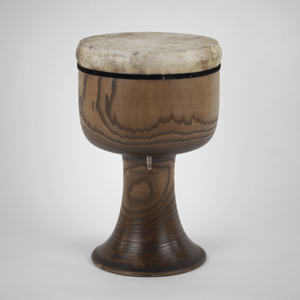
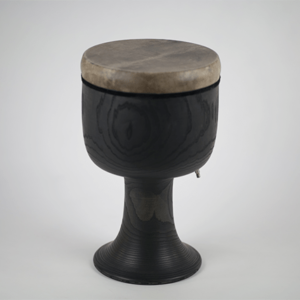
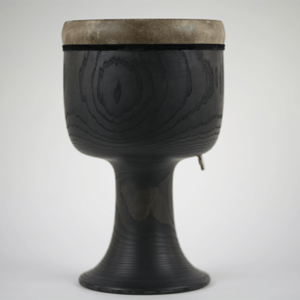

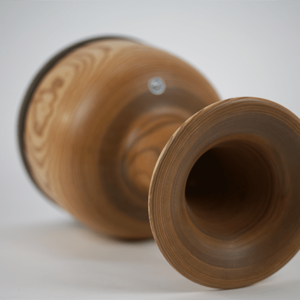
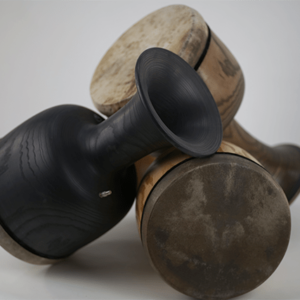
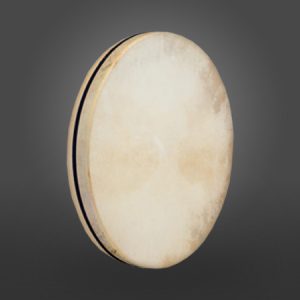
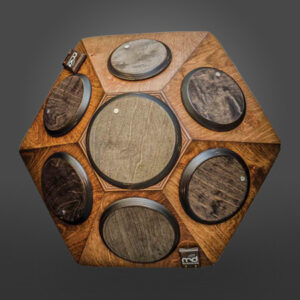
Reviews
There are no reviews yet.